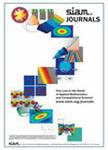版权所有:内蒙古大学图书馆 技术提供:维普资讯• 智图
内蒙古自治区呼和浩特市赛罕区大学西街235号 邮编: 010021

作者机构:UNNE CONICET RA-3400 Corrientes Argentina Univ Reading Dept Meteorol Reading RG6 6AH Berks England Colorado State Univ Dept Atmospher Sci Ft Collins CO 80523 USA
出 版 物:《SIAM-ASA JOURNAL ON UNCERTAINTY QUANTIFICATION》 (SIAM/ASA J. Uncertain. Quantif.)
年 卷 期:2021年第9卷第2期
页 面:681-707页
核心收录:
主 题:particle filters state-space models model error covariance EM algorithm
摘 要:Model error covariances play a central role in the performance of data assimilation methods applied to nonlinear state-space models. However, these covariances are largely unknown in most of the applications. A misspecification of the model error covariance has a strong impact on the computation of the posterior probability density function, leading to unreliable estimations and even to a total failure of the assimilation procedure. In this work, we propose the combination of the expectation maximization (EM) algorithm with an efficient particle filter to estimate the model error covariance using a batch of observations. Based on the EM algorithm principles, the proposed method encompasses two stages: the expectation stage, in which a particle filter is used with the present updated value of the model error covariance as given to find the probability density function that maximizes the likelihood, followed by a maximization stage, in which the expectation under the probability density function found in the expectation step is maximized as a function of the elements of the model error covariance. This novel algorithm here presented combines the EM algorithm with a fixed point algorithm and does not require a particle smoother to approximate the posterior densities. We demonstrate that the new method accurately and efficiently solves the linear model problem. Furthermore, for the chaotic nonlinear Lorenz-96 model the method is stable even for observation error covariance 10 times larger than the estimated model error covariance matrix and also is successful in moderately large dimensional situations where the dimension of the estimated matrix is 40 x 40.